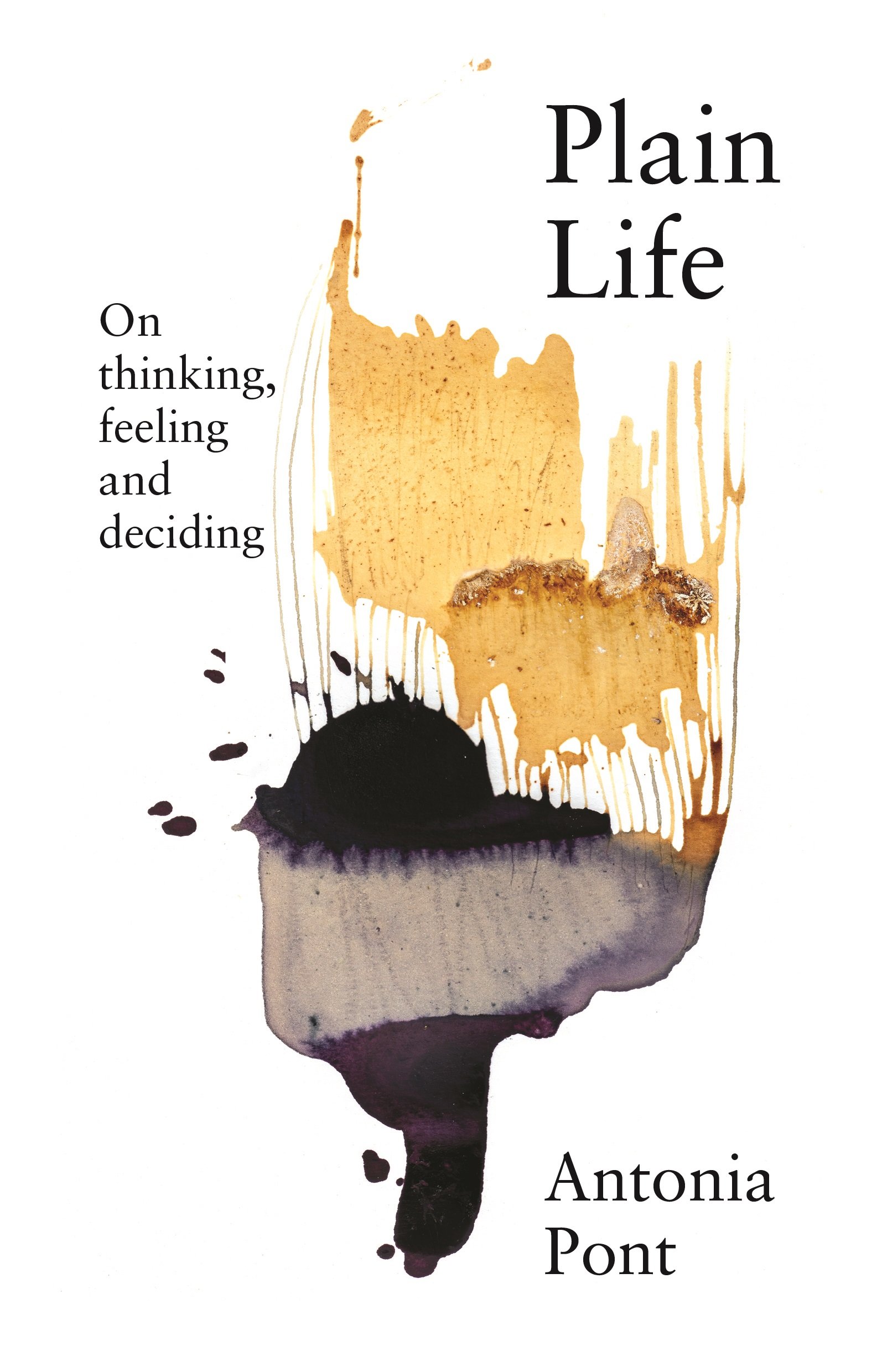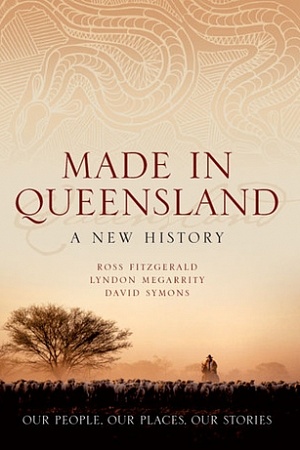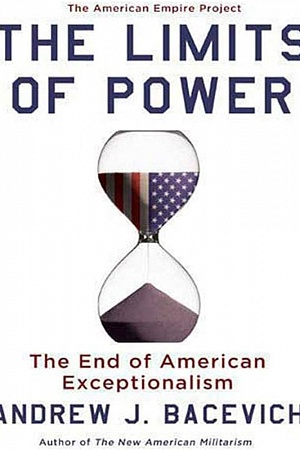From the Dreaming to 1915: A history of Queensland
UQP, 354 pp, $19.95 pb
From the Dreaming to 1915: A history of Queensland by Ross Fitzgerald
In the prologue to his history of Queensland, Ross Fitzgerald explains that:
All history is a story, told from the point of view of the present. This tale has one key theme: the effect of a particularly European idea of progress upon the land, the flora and fauna, the institutions, and the peoples of Queensland.
The major problem with this approach to history, as Fitzgerald treads it, is that he takes the preoccupations and perspectives of the twentieth century Sunshine State and implants them in a colonial Queensland context. This achieved, Fitzgerald can point to the continuities of Queensland history. I am reminded of my dog, who buries his bones and considers himself smart when he succeeds in digging them up.
The book is divided into two parts. Part one has chapters describing Aboriginal Queensland, European contact and the Moreton Bay settlement. Part two of the book includes an introduction and four chapters: one devoted to pastoralism, mining and agriculture; one to race relations; one to regionalism and one to what the author terms ‘the politics of progress’. Fitzgerald’s organisation of his material creates almost as many problems for the reader as does the material itself. Although the major themes of Queensland history (the development of primary industry, race relations and regionalism) have been correctly identified, Fitzgerald, in treating each as a separate issue, has failed to convey either the dialectics or the internal coherence of Queensland history, the course of which was determined by the population’s response to the challenges it faced. The choices which Queenslanders make in the Fitzgerald version are inevitable because if those choices were not made, we would not be what we are today.
Evans, Saunders and Cronin, in their study of race relations in colonial Queensland, have commented that:
contact situations … must be seen as much more than static set-pieces, fixed in time. For they represent human confrontations, incorporating the reasoning, the emotions, the endurance and suffering of men and women, either voluntarily involved or accidentally caught up in social happenings they could not fully understand. The easiest for us today is to condemn the exploiters and pity the exploited … yet it is hardest, though more important, that we endeavour principally to understand these people …
In these terms, Dr Fitzgerald has presented us Jess with a history than with a series of static set-pieces: contrived tableaux connected by moral commentaries.
By segregating the role of Aborigines, Melanesians, and Chinese into a single chapter, Dr Fitzgerald creates his own apartheid. He fails to integrate the experiences of racial minorities with the industries and ideologies which contributed to them. Moreover, although the chapter describes well the exploitation of non-whites by whites, it does not recognise, far less explore, the differing values, expectations and motives of participants on racial frontiers. Aboriginal resistance to European incursions is, creditably described. In dealing with all three groups within white dominated Queensland, however, Fitzgerald ignores, and thus denies, the initiatives which these minorities took in pursuing their own objectives. Why did some Aborigines cooperate with whites during and after initial frontier contact? Why did the Chinese flock to the gold fields and why did Melanesians often volunteer for service on° plantations? How did these groups react to the racist colonial environment in which they found themselves? Dr Fitzgerald’s failure to address these issues both ignores the discretion exercised by minorities in shaping the relationships which determined the nature of their existence in colonial Queensland and severely limits the validity of the author’s perspective.
Far more disappointing, however, is Dr Fitzgerald’s condemnation of those historians who have sought to distinguish between indentured and slave labour systems. In Queensland, he writes,
contrary to popular belief, it was not the first white settlement in the tropics to be ‘developed’ without the aid of slave labour. That until quite recently white historians should have wished to conceal the real nature of the Pacific Island labour trade in Queensland is entirely comprehensible, that they should have succeeded is astonishing. Regardless of ‘better conditions’ or ‘less frequent atrocities’, the Queensland kanaka trade was fundamentally similar to slave labour systems in other parts of the world.
Queensland historians have made valuable comparisons between the Queensland plantation system and the systems operating in other sugar producing areas, particularly Mauritius, where many of the white managers and overseers received their experience and training, and the southern states of the United States, and such comparisons are fundamental to any understanding· of the real nature of the indentured labour system. The hierarchical, caste-like organisation of plantations, ‘the methods of coercion and control of labour and the living and working conditions of the participants in’ slave and indenture systems were similar. Queensland’s Melanesians, however, sold their labour, however unequally, to planters, and were not the capitalised property of planters. On the one hand, this denied Melanesians a degree of protection and care usually accorded capitalised infrastructure; on the other, •it precluded the development, in Queensland, of the highly organised assault’ on the physical, psychological and emotional integrity of human beings that was intrinsic to, and undermined every human facet of, slave life. Fitzgerald cannot, or does not wish to, appreciate structural and ideological differences between the two systems, a disability which reflects more on himself than on the state of Queensland ‘historiography…’
In his concluding chapter, Dr Fitzgerald examines the nature of Queensland politics from separation to the Labor electoral victory of 1915. He explains that the colony enjoyed ‘strong social cohesion’ and he argues that a ‘corollary of cultural uniformity and anti-intellectualism was a latent authoritarianism uninhibited by a middle class liberal tradition.’ Although the chapter continues to describe the rise of working class radicalism, it maintains its general view that consensus and mediocrity fostered authoritarianism. In his concluding paragraph, Dr Fitzgerald writes that:
There can be little doubt that, given their optimistic faith in material ‘progress’, white Queenslanders – either owning or aspiring to own property, nurtured a deep seated concern for social and political stability. The stress on the struggle to ‘develop’ – at whatever cost – and the consequent neglect of moral issues, coupled with the high incidence of environmental and climatic hazards, especially in tropical Queensland, reinforced this concern with stability in the Sunshine State.
To some extent, this thesis is persuasive. It needs, however, to be carefully applied if the historical roots of our authoritarianism are to be understood.
Authoritarianism in Queensland during the period under review was a response to three conditions: social and political heterogeneity, the political requirements of economic dependence, and economic and psychological insecurity.
Far I from emerging in uniform and coherent societies, the trend towards authoritarianism has been most common in those polities where the authority of an élite to govern has been most challenged. Authoritarianism is only necessary to an elite under threat. Queensland’s social divisions, some of which Dr Fitzgerald has observed, divided black from white, Aboriginal from Melanesian, protestant from catholic, shopkeeper from squatter, squatter from selector, region from region and region from town, labourer from tradesman, tradesman from proprietor and non-Queensland capital from Queensland workers and resources. The major challenge for early Queensland governments was, therefore, the need to establish consensus among fractured and discordant communities, a consensus needed to mobilize a poorly integrated population. The solution found to this political problem was authoritarianism.
An important element of Queensland history not explored by Fitzgerald and relevant to the development of authoritarianism is the composition and role of the Queensland elite.
The divisions which split the Queensland population, in particular those of region, occupation and religion, coupled with the high proportion of foreign and southern capital in the Queensland economy, effectively prevented the growth of a coherent, stable and Queensland oriented elite. The graziers, lawyers and businessmen who, collectively, comprised Queensland’s upper class were little more than big fish in small provincial ponds. Queensland’s decentralisation precluded the mobilisation and unification of the upper classes which was a feature of Victorian and South Australian societies. Real economic power, in Queensland, moreover, rested in London and Melbourne and, since leadership functions are usually performed by those who control a community’s means of production, Queensland never produced an elite in which economic power was integrated with social status, it never produced an organic leadership. The regional and provincial families to whom status was attributed were less central to Queensland affairs than were absentee capitalists. In the absence of a unified and organic socio-economic elite, Queensland politics became progressively dominated by a class of managers and company representatives, and by those Queenslanders who collaborated in the exploitation of our resources. Queenslanders’ political leaders depended as much on support from Melbourne and London as they did on Queensland. Their interests, consequently, centred less on equitable and balanced economic and social development than on maximising the profitability of exporting Queensland’s raw materials, a profitability not to be diminished by dissent.
The rise of authoritarianism in Queensland was not the result, simply, of the machinations of capitalists and politicians. Life for most Europeans in early Queensland was often almost as unpleasant as it was for non-Europeans. Fortunes were uncertain and climates hostile. Despite the often brutal demonstrations of European monopolisation over the coercive arms of state and society, the intense physical, racial and cultural threats perceived by Queenslanders, particularly in the ‘north and west, fostered a deep-rooted insecurity which was, to some extent, assuaged by authoritarianism.
Queensland developmental ideology, therefore, was not the cause of our authoritarianism, but rather, the means through which our political leaders both mobilised otherwise fragmented electorates and legitimised the power they exercised on behalf of absent economic interests.
Dr Fitzgerald has joined the ranks of the historian in the grand manner. His book fails, not because he has tackled too broad a subject, but because he pursues his central theme at the expense of the nuances, ambiguities and contradictions, the exploration and resolution of which make history relevant. One is reminded of the words of Sir Steven Runciman: the supreme duty of the historian, he wrote in 1950,
is to write history, that is to say, to attempt to record in one sweeping sequence the greater events and movements that have swayed the destinies of man. The writer rash enough to make the attempt should not be criticized for his ambition, however much he may deserve censure for the inadequacy of his equipment or the inanity of his results.
John Walker completed an honours degree in history and government at the University of Queensland in 1979.










Leave a comment
If you are an ABR subscriber, you will need to sign in to post a comment.
If you have forgotten your sign in details, or if you receive an error message when trying to submit your comment, please email your comment (and the name of the article to which it relates) to ABR Comments. We will review your comment and, subject to approval, we will post it under your name.
Please note that all comments must be approved by ABR and comply with our Terms & Conditions.